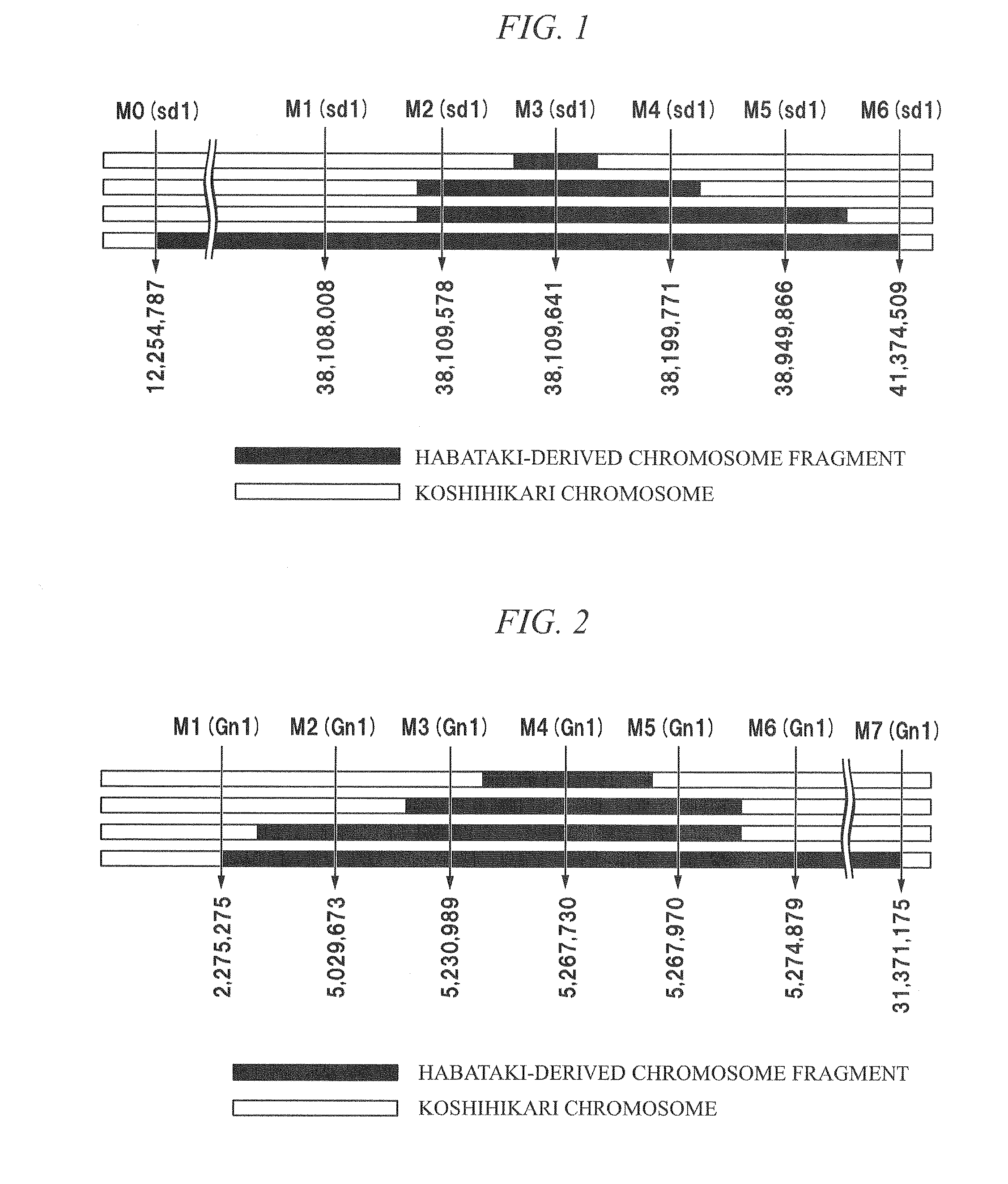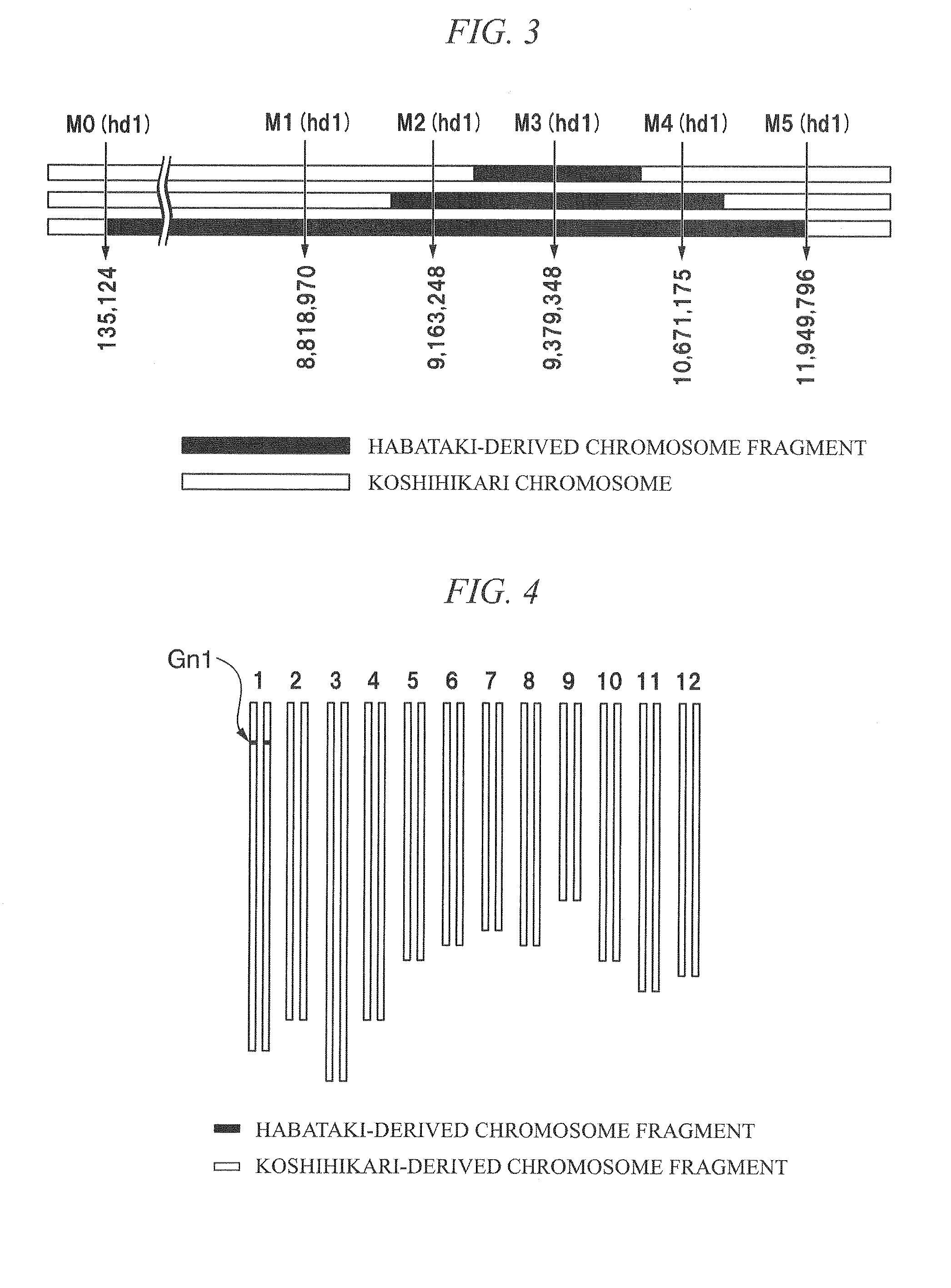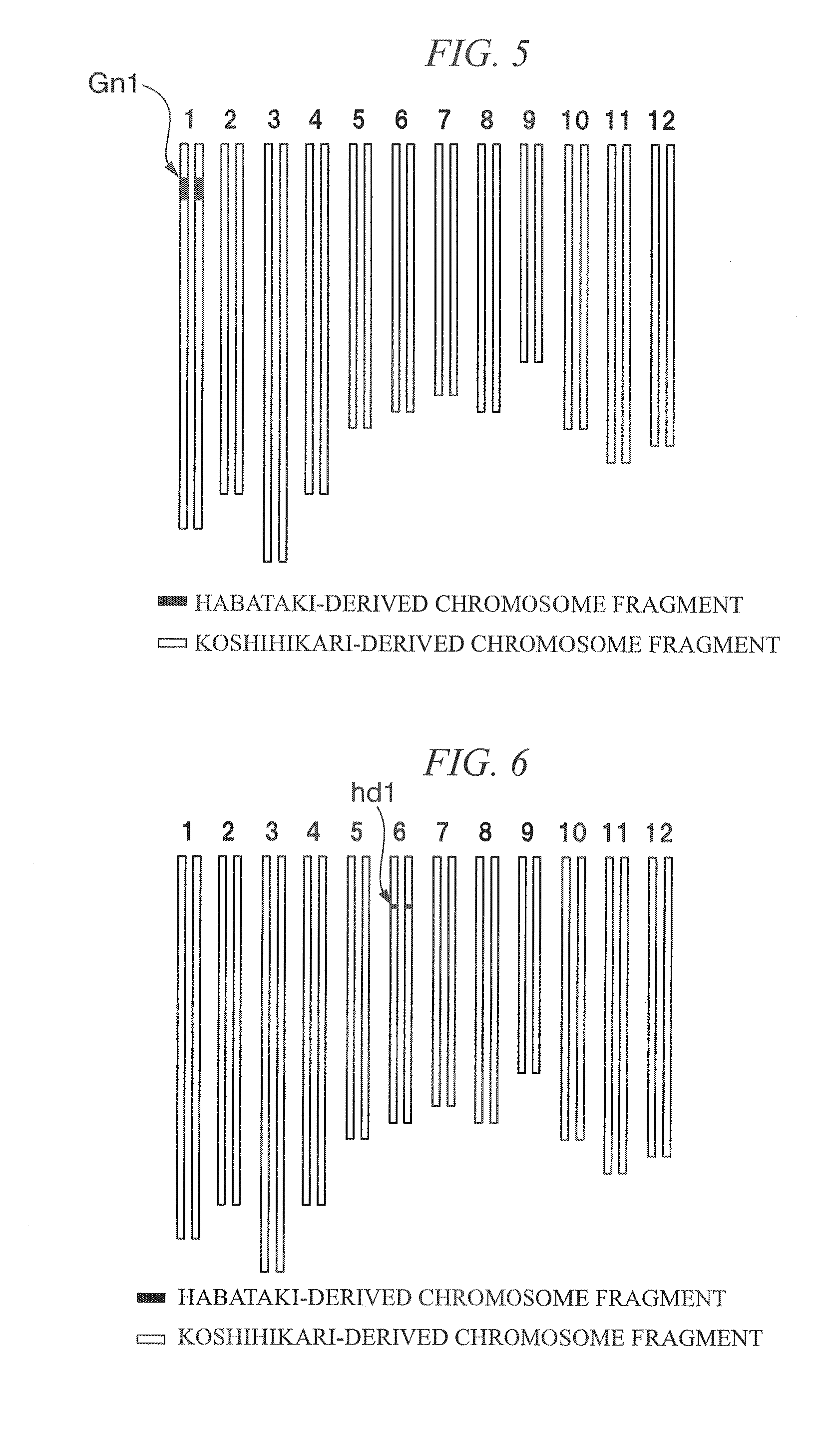Method for producing rice f1 seed, rice f1 seed, and rice male sterile line
a technology of rice f1 and f1 seed, which is applied in the field of rice male sterile line, can solve the problems of frequent appearance of a line without competence as a line for practical use, significant deterioration in selection efficiency, and low yield of rice, so as to improve lodging resistance and grain density, the effect of short culm length
- Summary
- Abstract
- Description
- Claims
- Application Information
AI Technical Summary
Benefits of technology
Problems solved by technology
Method used
Image
Examples
example 1
Near-Isogenic Line of Oryza saliva L. Cultivar Koshihikari
[0084]As a near-isogenic line of Oryza saliva L. cultivar Koshihikari for creating a rice male sterile line which is used as a seed parent, an Oryza saliva L. cultivar Koshihikari eichi 2go, an Oryza sativa L. cultivar Koshihikari eichi 2go_long region, an Oryza sativa L. cultivar Koshihikari eichi 3go, an Oryza sativa L. cultivar Koshihikari eichi 4go, an Oryza sativa L. cultivar Koshihikari eichi 4go_long region, an Oryza sativa L. cultivar Koshihikari kazusa 1go, an Oryza sativa L. cultivar Koshihikari kazusa 2go, an Oryza sativa L. cultivar Koshihikari kazusa 3go, and an Oryza saliva L. cultivar Koshihikari kazusa 4go were obtained.
[0085]Among these near-isogenic lines, an Oryza sativa L. cultivar Koshihikari eichi 2go, an Oryza sativa L. cultivar Koshihikari eichi 3go, an Oryza saliva L. cultivar Koshihikari eichi 4go, and an Oryza sativa L. cultivar Koshihikari kazusa 4go (deposit number: FERM P-21596) used herein were ...
example 2
Evaluation of Taste Quality>
[0116]Seeds of each F1 hybrid were obtained by mating CMS-Koshihikari or CMS-Milky Queen as a seed parent with ST-1, ST-2 or ST-4 as a pollen parent. Brown rice obtained by cultivating the resulting F1 hybrid was subjected to a taste quality organoleptic test. In the taste quality organoleptic test, a blend of brown rice of Koshihikari cultivated in a plurality of producing areas was used as a control. The test results are given in Table 5. As a result, the overall taste quality value of brown rice of each F1 hybrid obtained from CMS-Koshihikari was equal to or slightly inferior to Koshihikari. On the other hand, the overall taste quality value of brown rice of each F1 hybrid obtained from CMS-Milky Queen was superior to the F1 hybrid obtained from CMS-Koshihikari. From the observation of a tendency showing that an item of glutinosity became strong, improvement of the overall taste quality value was believed to be due to the introduction of a semi-waxines...
example 3
Days to Heading of F1 Hybrid
[0118]Seeds of each F1 hybrid were obtained by mating CMS-Koshihikari or CMS-Koshihikari eichi 3go as a seed parent with Oryza saliva L. cultivar Kusanohoshi, Oryza sativa L. cultivar Kusahonami, Oryza sativa L. cultivar Takanari, Oryza sativa L. cultivar Nishiaoba, Oryza saliva L. cultivar Fukuhibiki, Oryza sativa L. cultivar Hoshiaoba, Oryza sativa L. cultivar Guichao 2, Oryza sativa L. cultivar Shui-Yuan 258, or Oryza sativa L. cultivar Yumeaoba as a pollen parent. The resulting F1 hybrids were cultivated, and days to heading thereof were investigated. As a control, Koshihikari and each pollen parent were also cultivated and days to heading thereof were investigated.
[0119]The measurement results of days to heading of each line are shown in FIG. 17. In this test in which seeds were sowed on May 13, days to heading of the control cultivar Koshihikari were 84 days, whereas many of the F1 hybrid lines obtained by using the tested CMS-Koshihikari as a seed ...
PUM
 Login to View More
Login to View More Abstract
Description
Claims
Application Information
 Login to View More
Login to View More - R&D
- Intellectual Property
- Life Sciences
- Materials
- Tech Scout
- Unparalleled Data Quality
- Higher Quality Content
- 60% Fewer Hallucinations
Browse by: Latest US Patents, China's latest patents, Technical Efficacy Thesaurus, Application Domain, Technology Topic, Popular Technical Reports.
© 2025 PatSnap. All rights reserved.Legal|Privacy policy|Modern Slavery Act Transparency Statement|Sitemap|About US| Contact US: help@patsnap.com



